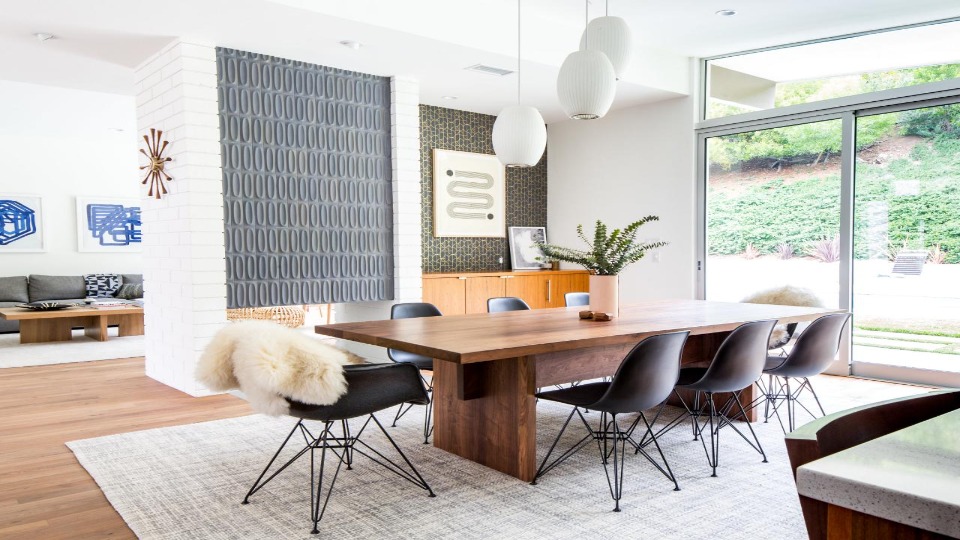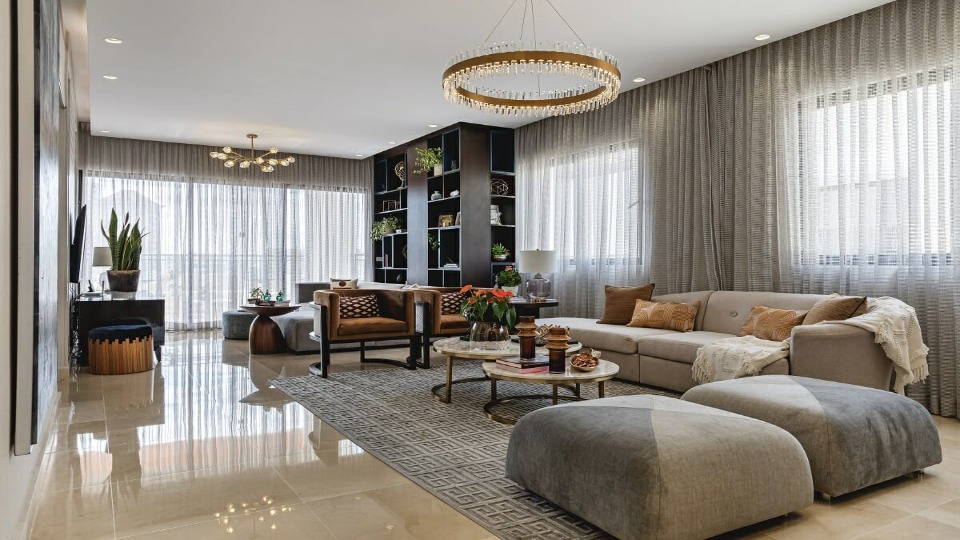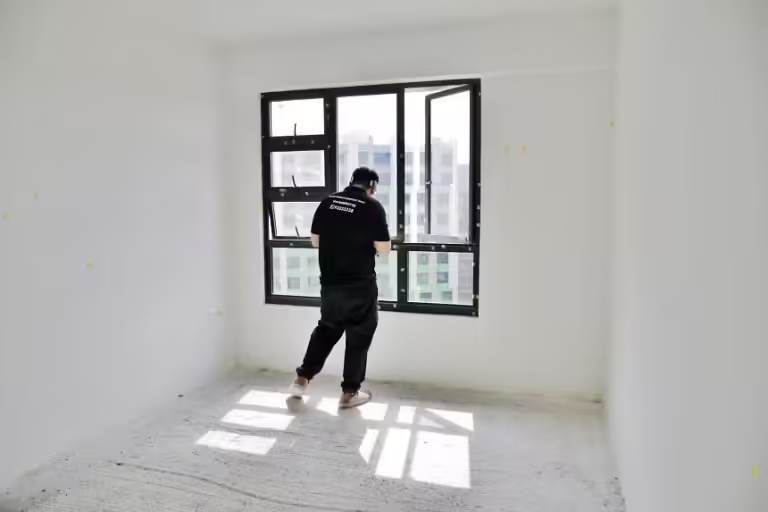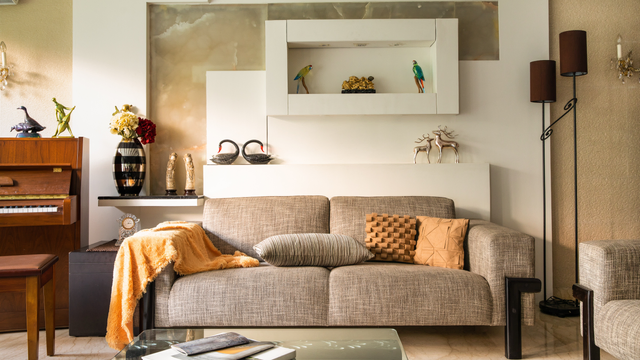Introduction
Whether you’re a seasoned pro at decorating your space or a newcomer eager to transform your surroundings, understanding the different types of interior design styles is a fabulous starting point. In this blog post, we’ll embark on a fascinating journey through the myriad of styles that have shaped homes and spaces around the globe. From the sleek minimalist designs that whisper elegance, to the bohemian rhapsodies that sing of adventure and freedom, there’s an entire spectrum to explore. Each style holds its unique charm, story, and set of characteristics that cater to various tastes and preferences. So, buckle up and let’s dive into the vibrant universe of interior design styles — your perfect space awaits!
Overview of Interior Design Styles

Choosing the right interior design style for your space can significantly enhance your living experience. With a myriad of styles out there, it can be quite overwhelming to decide which one best matches your personality and lifestyle. Below, we delve into some popular interior design styles, providing you with a comprehensive overview that might just help you make that all-important decision.
Traditional Style
When you think of traditional style, think timeless elegance. This style is all about classic details, sumptuous furnishings, and an abundance of accessories. It originates from 18th and 19th-century European sensibilities, featuring dark, finished wood, rich color palettes, and a variety of textures and curved lines. Furniture pieces are often in pairs and their layouts symmetrical to create a space that feels both comfortable and formal at the same time. Decorative elements like moldings and paneling are prominent, adding depth and dimension to the rooms.
Contemporary Style
Contemporary style is ever-evolving, reflecting the trends of the current times. It’s defined by simplicity, subtle sophistication, and deliberate use of texture. Color palettes lean towards natural hues, providing a clean and fresh feel. Furniture has distinct and crisp lines without much fuss, while spaces are often open and airy, promoting a sense of calm and relaxation. Unlike the traditional style, contemporary design embraces minimalism, with less emphasis on accessories and more focus on the space itself.
Modern Style
Modern style is often confused with contemporary design, but they are distinct in their essence. Modern design refers specifically to the period between the early to mid-20th century. It is characterized by a minimalist approach, with clean, crisp lines and a simple color palette of neutrals and bold colors. There is a strong emphasis on materials such as steel, glass, and concrete, celebrating natural materials and the absence of unnecessary detailing. Furniture in modern design features sleek, smooth surfaces and is functional, often serving multiple purposes.
Classic Interior Design Styles

Within the world of classic interior design, several styles stand out for their timeless appeal and strong historical roots. Let’s journey back in time and explore some of these classic styles that continue to influence today’s design preferences.
French Country
French Country style combines the rustic and refined, bringing the warmth and charm of the French countryside into the home. It is known for its soft color palettes consisting of pastel hues mixed with whites and creams, accented with splashes of vibrant colors like sunflower yellow, fiery red, or lavender. Furniture is typically made of wood with ornate carvings and painted finishes, and fabrics feature patterns like toile, floral, and plaid, adding to the cozy yet sophisticated atmosphere.
Victorian
Named after Queen Victoria, the Victorian style exudes opulence and grandeur. It is characterized by elaborate and ornate details, heavy fabrics like velvet and silk, and a rich color palette featuring deep blues, greens, and reds. Furnishings are luxurious and often include elaborate carvings and inlays, with antiques and vintage pieces playing a significant role in decorating. Accessories are abundant, with an emphasis on showcasing collectibles and heirlooms, adding to the overall lavishness of the style.
Art Deco
Art Deco is a style of visual arts, architecture, and design that first appeared in France just before World War I and took its name from the Exposition Internationale des Arts Décoratifs et Industriels Modernes, held in Paris in 1925. It is characterized by sleek, metallic finishes, geometric patterns, and exotic materials. Furniture pieces are streamlined and feature a mix of natural and man-made materials, including wood, lacquer, glass, and metal. Color schemes are bold and vibrant, with a heavy use of blacks, golds, and other metallic tones. Accessories often include mirrors, chrome lighting fixtures, and artworks, creating an overall feeling of luxury and sophistication.
These interior design styles are just the tip of the iceberg when it comes to decorating your space. Each style has its unique charm and characteristics, making it suitable for different personalities and tastes. Whether you’re drawn to the timeless elegance of traditional or the sleek sophistication of modern design, there’s a style out there that’s perfect for you. Remember, the best space is one that reflects your personal style and accommodates your lifestyle, so don’t hesitate to mix elements from different styles to create a look that is uniquely your own.
Minimalist Interior Design Styles

Minimalism has taken the world by storm, turning from a mere design philosophy into a whole lifestyle choice for many. Its core principle revolves around the idea of less is more, focusing on simplicity and functionality. While minimalist design shares common characteristics like clean lines, uncluttered spaces, and a limited color palette, there are variations within the style that draw inspiration from different cultures and aesthetics. Let’s delve into some of the most popular minimalist interior design styles: Scandinavian, Japanese, and Industrial.
Scandinavian
The Scandinavian style is all about creating cozy, inviting spaces that balance beauty with practicality. Originating from the Nordic countries, this design emphasizes light, airy spaces with a strong connection to nature. The color palette tends toward whites, beiges, and soft grays, complemented by natural elements like wood, leather, and wool. Furniture in Scandinavian interiors is often multi-functional and designed with clean, simple lines to maximize space and light. Decor is kept to a minimum, with a focus on quality over quantity. Large windows, light-colored floors, and the use of plants and candles enhance the sense of calm and connection to the outdoors.
Japanese
Japanese minimalist design, often referred to as Zen, centers on simplicity, natural elements, and a deep respect for craftsmanship. It draws inspiration from the traditional Japanese philosophy of Zen Buddhism, which emphasizes simplicity, meditation, and harmony with nature. The design features clean, straightforward lines and a neutral color palette, with occasional pops of color coming from natural elements like plants or traditional Japanese art. Furniture is typically low to the ground, and spaces are carefully planned to encourage flow and tranquility. Sliding doors, natural fabrics, and the thoughtful use of light and shadow play significant roles in creating serene, mindful spaces.
Industrial
Industrial design is a rugged and raw take on minimalism, inspired by the look and feel of warehouses, factories, and other industrial spaces. This style combines minimalist principles with industrial elements like exposed brick, metal, and ductwork to create a unique, edgy aesthetic. The color scheme often includes neutrals — particularly gray, black, and white — combined with the occasional use of bold accent colors. Furniture and decor in industrial interiors tend to have a strong, functional form with little to no unnecessary embellishments. The focus on open spaces and the blending of different materials (wood, metal, concrete) give these environments a distinct, unfinished look that’s both stylish and practical.
Eclectic Interior Design Styles

Eclectic interior design is like the boisterous, adventurous cousin of minimalism. It’s all about mixing and matching, combining elements from different time periods, and styles, and unifying them through color, texture, and composition. This approach can be incredibly personal and expressive, allowing for creativity and uniqueness to shine. Here are some eclectic styles that continue to capture hearts and imaginations: Bohemian, Mid-Century Modern, and Hollywood Glam.
Bohemian
The Bohemian, or “Boho,” style is for those who view their homes as extensions of their free-spirited, unconventional lives. It’s characterized by a rich mix of colors, patterns, and textures, brought together in a relaxed and comfortable way. Vintage furniture, global-inspired textiles, and an abundance of plants are hallmarks of the Boho style. There’s also a strong emphasis on handmade and collected items, which adds a personal touch and tells a story. The color palette is wide-ranging, from earthy tones to vibrant hues, creating a warm, inviting space that encourages creativity and relaxation.
Mid-Century Modern
Mid-Century Modern design is a throwback to the aesthetics of the mid-20th century, especially the ’50s and ’60s. It’s known for its clean lines, organic shapes, and seamless integration of form and function. Furniture pieces are iconic, featuring sleek, simple lines and natural materials like wood, metal, and leather. The color palette includes a mix of neutral shades complemented by bold colors like mustard yellow, teal, and burnt orange. Lighting, artwork, and accessories play critical roles in this style, often featuring geometric shapes and patterns. Mid-Century Modern is all about bringing the nostalgia of the past into the present in a sleek, sophisticated way.
Hollywood Glam
Hollywood Glam, also known as Hollywood Regency, is all about opulence, luxury, and drama. Inspired by the golden age of Hollywood, this style combines Art Deco and Victorian elements to create a rich, glamorous aesthetic. The color palette is bold and dramatic, with black and white often serving as a base complemented by pops of color like pink, turquoise, or gold. Luxurious materials like velvet, silk, and faux fur are prevalent, along with mirrored and glossy finishes. Furniture is ornate and eye-catching, with a focus on plush seating and elegant decor. Chandeliers, plush rugs, and metallic accents add to the overall sense of luxury, making any space feel like a star-studded affair.
Whether you’re drawn to the simplicity and calm of minimalist designs or enamored with the boldness and expressivity of eclectic styles, there’s an interior design style that’s perfect for you. Remember, the best space is one that reflects your personality, meets your needs, and makes you feel truly at home. Happy decorating!
Conclusion
Choosing the right interior design style for your space can be a delightful yet daunting journey. With such a rich array of options, from the sleek lines of Modern and Minimalist designs to the bold textures of Bohemian and Eclectic styles, you’re bound to find one that resonates with your personal taste and lifestyle. Remember, the key to a successful design lies in your creativity and personal touch. Don’t be afraid to mix elements from different styles to create a space that’s uniquely yours. Whether you’re renovating an old space or decorating a new one, understanding the different types of interior design styles is your first step towards creating a home that reflects your personality and welcomes you warmly every day. Happy decorating!




